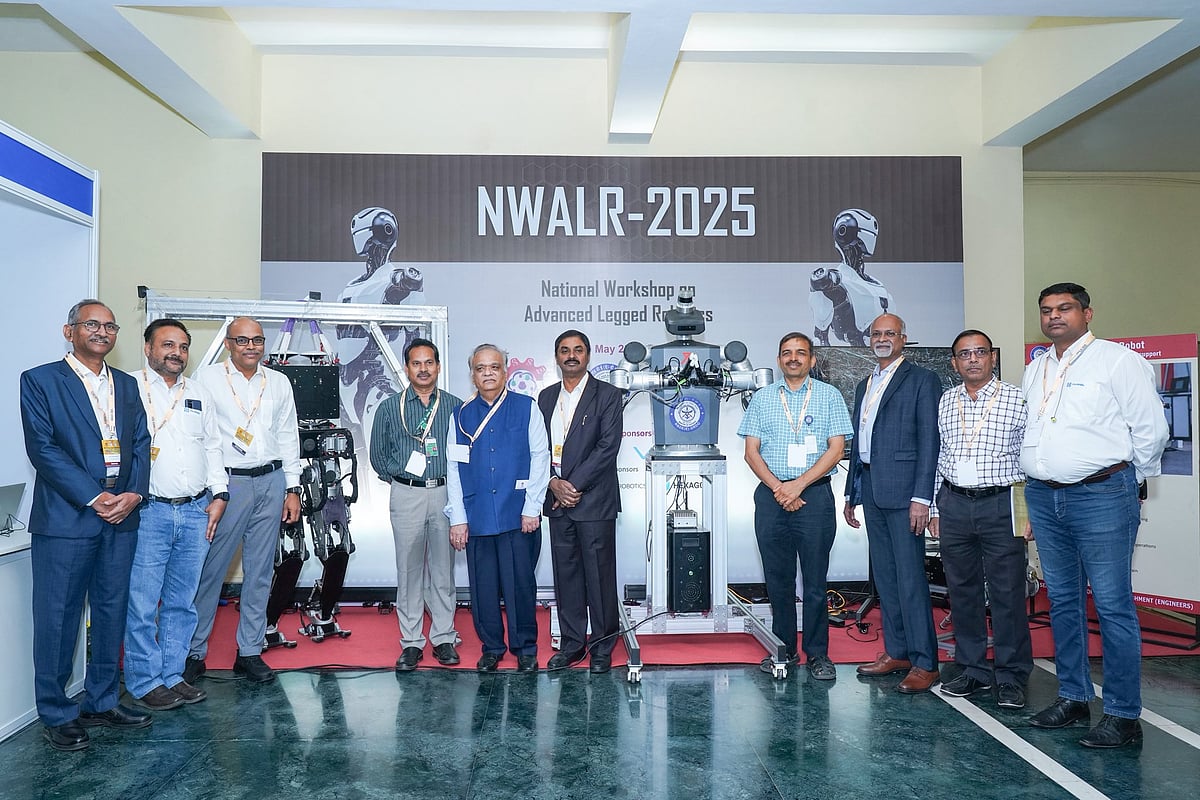PHOTOS: DRDO Scientists In Pune Develop Humanoid Robot For Military Missions | X/@DRDO_India
Scientists at the Defence Research and Development Organisation (DRDO) are working on a humanoid robot that can be part of frontline military mission, an official said on Saturday.
The Research and Development Establishment (Engineers), a key lab under the DRDO, is developing a machine that can carry out complex tasks under direct human command, aiming to reduce troop exposure in high-risk environments, the official said.
Talking to PTI, SE Talole, group director at the Centre for Systems and Technologies for Advanced Robotics within the R&DE (Engineers), said the team has been engaged in the project for four years.
“We’ve developed separate prototypes for the upper and lower body and have successfully achieved certain functions during internal trials,” he said, adding that the humanoid will be able to function on tough terrains like jungles.
The robot was recently showcased at the National Workshop on Advanced Legged Robotics held in Pune.
Currently in its advanced development phase, the team is focusing on refining the robot’s ability to understand and execute operator commands.
The system relies on three key components: actuators that generate movement like human muscles, sensors that collect real-time data from the surroundings, and control systems that interpret this information to guide actions.
Talole said, “One of the biggest challenges is ensuring the robot can carry out desired tasks smoothly, which requires mastering balance, rapid data processing, and ground-level execution.” Researchers are concentrating on these aspects as they move towards completing the project by 2027, said Kiran Akella, a scientist leading the design team.
DRDO officials said legged robots, both bipedal and quadrupedal, offer immense potential in defence and security and sectors like healthcare, domestic assistance, space exploration and manufacturing.
However, creating autonomous, efficient-legged robots comes with significant technological hurdles, they said.
Scientists explained that the humanoid’s upper body would feature lightweight arms with a spherical revolute joint configuration, offering 24 degrees of freedom – 7 in each arm, 4 in the gripper and 2 in the head.
The robot will be able to perform complex autonomous tasks with closed-loop gripping and manipulate objects by turning, pushing, pulling, sliding doors, opening valves and overcoming obstacles, especially in high-risk environments, they said.
Both arms will work collaboratively to safely handle hazardous materials such as mines, explosives and liquids.
The system will operate seamlessly day or night, indoors or outdoors, and incorporate proprioceptive and exteroceptive sensors, data fusion capabilities, tactical sensing, and audio-visual perception.
The humanoid biped will include features such as fall and push recovery, real-time map generation, autonomous navigation, and path planning through simultaneous localisation and mapping (SLAM), enabling it to carry out complex autonomous operations in challenging, high-risk environments.
